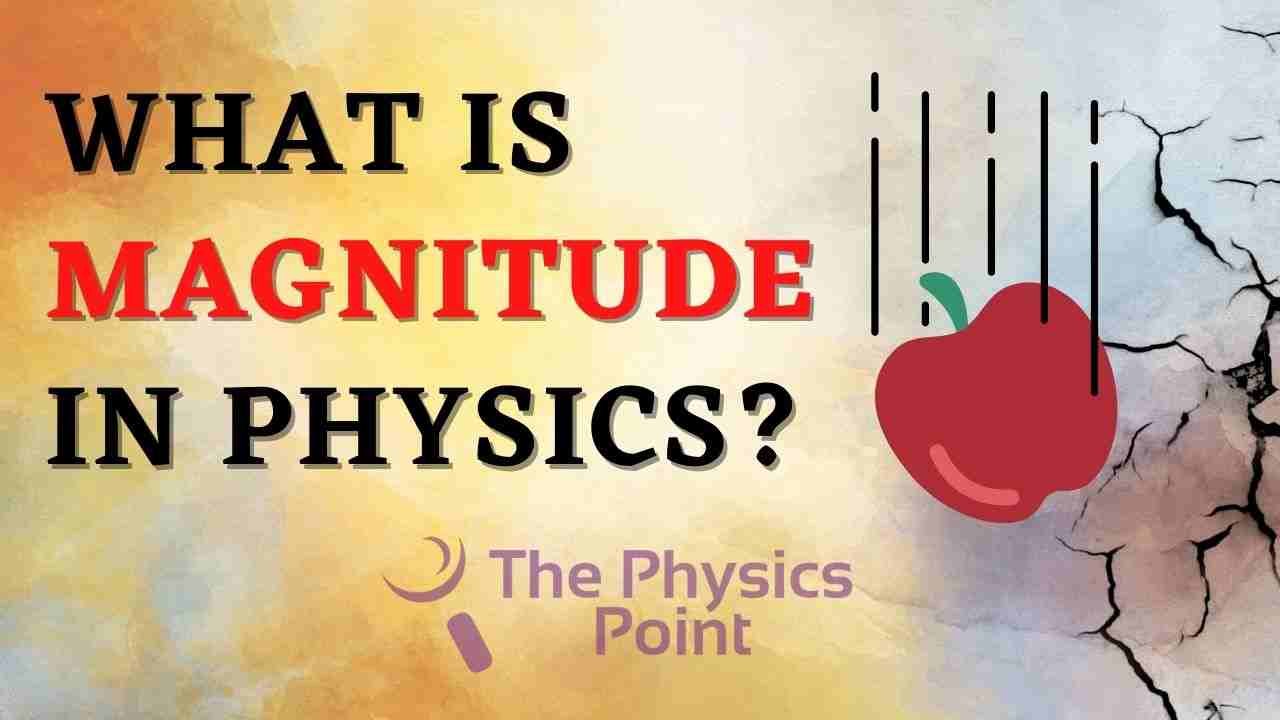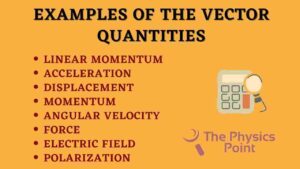What is Magnitude in Physics? Definition, Example and Formula

Hello, students and readers of The Physics Point website. Once again we come back with the new article what is magnitude in physics? Physics is a subject that has no limitations or boundaries. To make your concepts clear they are going to describe the magnitude. The magnitude is the value of any quantity for more clear understanding you have to read this whole article from start to end. In Physics, magnitude is generally stated as the distance or displacement, But it can be any physical quantity. To know about the basics of Physics and its branches you can read our previous article and the link is given below the paragraph.
We will describe the most useful questions that are asked in many competitive and board exams so that students get more benefit and make their understanding clear in Physics in the scalar and vector quantities and the magnitude topic. We will also describe here what is scalar quantities and what is vector quantities With all possible examples besides magnitude definition physics, How to find the magnitude, or how to calculate the magnitude. So without wasting much time let’s move on to our main topic what is magnitude in Physics?
What is Magnitude in Physics (Definition)?
In today’s article what is magnitude in physics, we are going to talk about the quantities that have only magnitude and no directions. So for the magnitude definition, it is stated that the magnitude is the number of a quantity that shows how large or small the quantities are in comparison to their Reference Point. Most of the time in physics be choose the reference point is the origin. In Physics, magnitude is generally stated as the distance or displacement, But it can be any physical quantity.
Examples of Magnitude
We can understand the definition of magnitude by the given example below –
1. Suppose that a car is running with 20 m/s in the North direction, so here the value of speed 20 m/s is the magnitude, but the north is the direction of the car.
2. Let’s take another example of magnitude. Suppose that you are going to market and buy 10 kg of potatoes. So here is the value of potatoes in this 10 kg and the magnitude is equal to 10. It means the magnitude shows the number that how the quantity or any object is large or small as we stated in the above definition.
Hope you guys understand what is magnitude in Physics so clearly. Now lets we are going to talk about the other things related to the magnitude and different types of formulas.
What are scalar quantities?
Scalar quantities in physics are described by their magnitude only. It means the quantities which do not have the direction are called scalar quantities. For example, Speed, energy, time, volume, and density are the scalar quantities that possess only the magnitude without having the direction. We can manipulate the scalar quantities by simple algebraic laws.
One more important thing is that the scalar quantities have a magnitude that may be positive or may be negative but it is usually positive. The work done on any object by a force may be negative or may be positive. It is positive in the case when the force and the direction of displacement are the same to each other. If it is negative in the case when the direction of the force and displacement are opposing each other.
The formula for the work done is given below –
W = F.S Cosθ
Here W equals work done on the object by force.
F is the force acting on the object as is the displacement of the object.
θ, describe the angle between the force vector and displacement vector.
If an object covers a distance d in time t so the formula of speed is given below –
v = d/t
Here v represents the speed of that object
d measures the distance covered by that object
t is the time interval to cover the distance d by the object.
Examples of the scalar quantities
Here are some examples of scalar quantities are given below you can learn and understand them to make your concepts clear. Keep in mind a thing that scalar quantities have only magnitude.
- Mass
- Distance
- Speed
- Volume
- Time
- Temperature
- Density

What are vector quantities?
As we stated above that is scalar quantities have only magnitude but when we talked about vector quantities they possess both magnitude and directions also.
Let’s understand it by an example. Suppose that a car is running at 40 m per second in the East direction, so here the value of speed 40 m per second is the magnitude, but the East is the direction of the car. Here we can see that the magnitude and directions both are combined to make a vector quantity. If we remove the direction East from the above example, it remains only the scalar quantity not a vector and it is called the speed. But when we combine both of them, it is called a vector quantity, which means the car’s velocity.
A vector that has a magnitude equal to 1 is known as the unit vector and it is represented as “û“.
Examples of vector quantities
Here are some examples of vector quantities given below. You must learn and understand them to make your concepts more clear. Keep in mind a thing that vector quantities have both magnitudes and directions as well as.
- Linear momentum
- Acceleration
- Displacement
- Momentum
- Angular velocity
- Force
- Electric field
- Polarization

Conclusion
In today’s article, we described all possible types of examples of magnitude in physics and definitions of the magnitude. We also describe to you the formulas of some quantities. I hope you understand this topic What is magnitude physics very much, So guys if you found this article very helpful to you and you gain something from our blog, we recommended you share this useful article with your friends also. The next day, we will come up with a new and fresh topic of Physics. Thank you!
